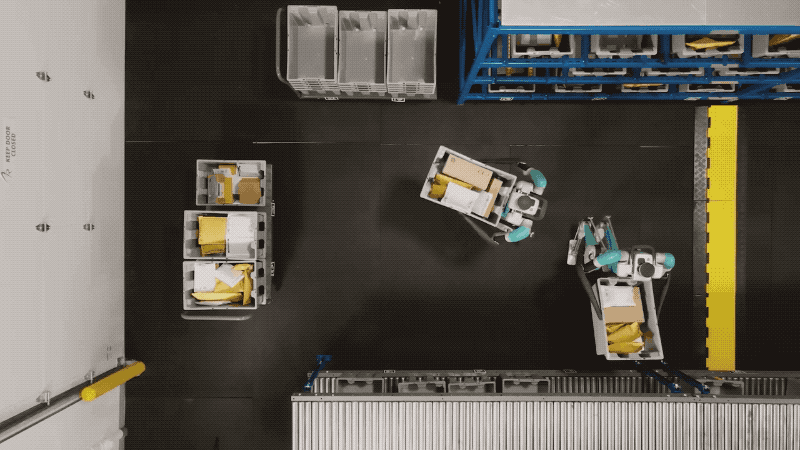A new video from Agility Robotics showcases an increasing familiar sight: advanced, autonomous robots performing boring warehouse tasks. It’s not the sort of video that tends to be hugely viral for a company, rather, it’s the sort of meat and potatoes proof of concept that companies like Boston Dynamics wedge between flashy videos of parkour and highly choreographed dance sessions.
Ultimately, however, this is precisely the sort of tasks the robots’ creators are targeting: the well-known trio of dull, dirty and dangerous. Moving payloads back and forth certainly ticks that first box pretty well. There’s a reason warehouse and fulfillment workers often liken their work to robotics.
“The conversation around automation has shifted a bit,” Agility CEO Damion Shelton tells TechCrunch. “It’s viewed as an enabling technology to allow you to keep the workforce that you have. There are a lot of conversations around the risks of automation and job loss, but the job loss is actually occurring now, in advance of the automated solutions.”
Digit, the bipedal robot the company announced back in 2020, had its most high-profile moment in the spotlight after Agility announced a partnership with auto giant Ford back at CES. The auto giant currently owns two of the robots, with long-term plans to utilize the technology for delivery.
Today’s video is an attempt to showcase some more short-term solutions, putting Digit to work on more menial tasks.

Image Credits: Agility Robotics
“The value and goal of a machine like Digit is the generality,” CTO Jonathan Hurst says. “It’s a robot that can operate in human environments and spaces. It’s a relatively straightforward thing for very structured, repetitive tasks, to say, ‘there’s going to be boxes over there. We’re going to tell you which one from a databasing system, and we want you to move it over there.’ Maybe this is something that it does for three or four hours a day and then it goes to a different space and does it three or four hours and then it unloads a tractor trailer.”
The company sees Digit’s value as a more plug and play solution than something like Berkshire Gray’s offerings, which builds a fully automated warehouse from the ground up. There’s still programming involved, of course. An Agility rep will appear on-site to pre-map a location and help the robot execute its repetitive tasks.
“In terms of where we can actually deploy and do useful work for a customer, it turns out a lot of the tasks — walk from Point A to Point B, pick up and carry a package — are portable across these environments,” says Shelton. “There’s no real core piece of technology that you develop, that’s different for an indoor environment versus outdoor. It’s just the level of maturity. I think we’ve reached that pretty quickly on the indoor stuff, so it’s a logical first place for deployment.”

Image Credits: Agility Robotics
Agility hasn’t announced partners beyond Ford, though it says it’s currently working with “major logistics companies.” It hasn’t revealed numbers of Digits sold, either, though it tells TechCrunch that the number is “substantially more” than the dozen Cassie units it sold prior to Digit, largely for research purposes. Sales are largely CapEx at the moment, though the company is exploring other opportunities, such as a RaaS (robotics-as-a-service model).
Agility’s team is currently at 56 people, primarily based in Oregon (the company got its start as part of OSU’s nascent robotics division), where the robots are primarily manufactured.
“We’ve grown pretty rapidly since last December,” says Shelton. “We’re expanding our Pittsburgh office by the end of the year, in addition to the Oregon office. We have a pretty rapid growth rate. As we’ve been increasing the production rate on the robots, we’ve had a fair amount of hiring for that. We just moved into a new facility that we remodeled, back in June.”
